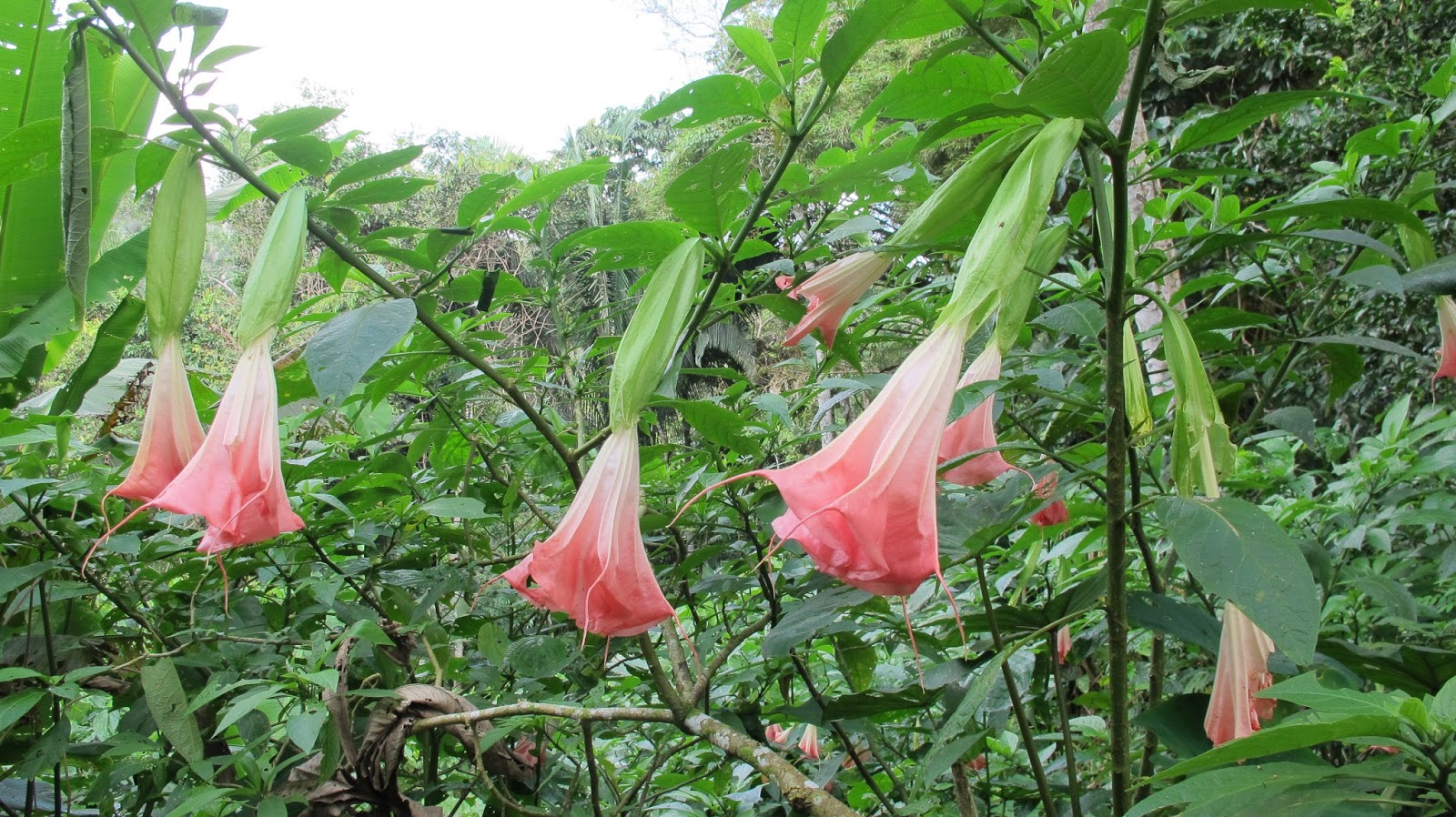"I learned, because I lived
for six years inside Lake Limoncocha. Six years.
It is unbelievable, this story, but it is for real. I lived six years inside
that lake. After six years, I was
crowned, and given the power to cure the sick."
from the shores of the Laguna Limoncocha in the Ecuadorian Oriente
This is one of the more interesting moments in an interview with a gentleman I met in Ecuador last summer. Silverio and his wife Maria live in a cabin on the edge of the Laguna Limoncocha, outside the town of Santa Elena in the heart of Ecuadorian oil country. Every weekday morning, Silverio speeds across the lake in his motorboat to deliver his grandson to high school. He and Maria have built several buildings (and modern cement outhouses with showers) to serve international tourists. A diesel generator provides electric lights at night, which in turn draw hordes of mosquitoes. I asked him to turn off the generator for this interview.
 |
| Silverio and Maria's home |
On the other hand, once he gave up shamanism and became an Evangelical, Silverio lost all his powers to heal and to transform himself into the animals of the forest. Nor could he (or would he) sing me any of his shaman songs. But he was glad to tell me his story in hopes that this recording would help to preserve indigenous culture.
Sights and sounds from Silverio's back yard, looking out over the lake.
 |
| Silverio and Maria |
Here is part 1 of his interview with subtitles in Spanish and in English.
 This "video" is part of my ongoing project to transcribe and translate interviews from last summer and, more importantly, make them available to a wider audience—especially the young people of the Amazon who, where resources are available, are very computer savvy. I was careful to get permission from everyone to make their interviews public. Sensitive interviews, and people that I don't have explicit permission from, won't get uploaded. Eventually all this work will be deposited with the Archive of Indigenous Languages of Latin America, an academic database hosted by UT-Austin. However, I know some of these people, particularly Silverio's nephew Pedro, is eager to get the word out about their lives and their work. "Are you going to put us on the internet?" Pedro kept asking me. I thought he just wanted tourists, but now that I've revisited his interview, I see that he has a much greater message. People aren't going to find Pedro on the AILLAS website, so once we get his (video) interview subtitled, I'll post it here, and probably deposit it on YouTube or Vimeo.
This "video" is part of my ongoing project to transcribe and translate interviews from last summer and, more importantly, make them available to a wider audience—especially the young people of the Amazon who, where resources are available, are very computer savvy. I was careful to get permission from everyone to make their interviews public. Sensitive interviews, and people that I don't have explicit permission from, won't get uploaded. Eventually all this work will be deposited with the Archive of Indigenous Languages of Latin America, an academic database hosted by UT-Austin. However, I know some of these people, particularly Silverio's nephew Pedro, is eager to get the word out about their lives and their work. "Are you going to put us on the internet?" Pedro kept asking me. I thought he just wanted tourists, but now that I've revisited his interview, I see that he has a much greater message. People aren't going to find Pedro on the AILLAS website, so once we get his (video) interview subtitled, I'll post it here, and probably deposit it on YouTube or Vimeo.
If anyone out there is a pro with this stuff, please speak up. We could use some help with transcribing, translating, subtitling, editing video, posting it all in the right place and the right format... My volunteer translator Kate Keller has stepped up to the plate in a big way—she's the one who transcribed and translated all 13 pages and 7500 words of part 1 of this interview—and then turned around and got started on part 2. She's also finished a few short pieces with Silvana, Pedro's daughter—I'll post those here as well. Eventually, the point is to get these oral histories back to where they came from, whether in digital or in print form. My dream is to use this project as a template for a repository of indigenous language and culture—one that is accessible and attractive to Amazonian youth. Maybe even crowd-sourcing the transcription and translation as a language revitalization project…
Stay tuned. There's definitely more to come. Part 2: How Supay Cocha got it's name.
 |
| On the trail to Supay Cocha. A "supay" is a spirit--but not necessarily a benevolent one. "Cocha" means "lake" in Kichwa. |
 |
| Just another giant tree on the trail to Laguna Limoncocha. This is my guide, Eduardo. |
 |
| Orquidea? Or maybe some kind of lily? |



No comments:
Post a Comment